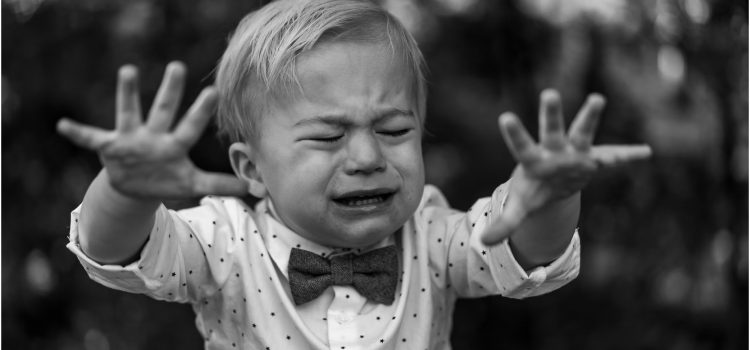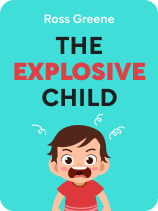

This article is an excerpt from the Shortform book guide to "The Explosive Child" by Ross Greene. Shortform has the world's best summaries and analyses of books you should be reading.
Like this article? Sign up for a free trial here.
Does your child lash out? Are your child’s tantrums difficult to control?
Child tantrums can be draining and extremely disruptive to home life, and it may be hard to pinpoint where these explosions are coming from. With the help of The Explosive Child by Ross Greene, you can figure out why your child is having outbursts in order to stop them.
Keep reading to learn the myths about child tantrums and where they originate from.
Understanding Explosive Children
Greene defines “explosive” children as children who have frequent and severe outbursts: moments of heightened frustration, anger, and inappropriate behavior. Behaviors during a child’s tantrum might include extended screaming fits, physical violence, or shutting down entirely. All children have outbursts occasionally, but explosive children have them often enough to overwhelm or even endanger themselves and their families.
(Shortform note: Greene describes his method as a way to deal with problems counselors have been unable to address, but he doesn’t view it as a replacement for counseling. In fact, one of the main functions of Greene’s non-profit Lives in the Balance is to work with pediatricians, counselors, and other mental health professionals. So, while the method covered in this guide is helpful to a great extent, if you’re in a situation where your child is showing particularly concerning violent or aggressive behaviors, know that there is nothing wrong with getting a mental health professional involved.)
Before you can address your child’s outbursts, Greene explains, you must first understand why they happen. To this end, we’ll walk through common myths about the causes of outbursts and then outline Greene’s explanation of why they really happen.
Common Myths About Outbursts
Greene focuses his arguments on two common myths about outbursts:
Myth #1: Outbursts Are Planned
The first and most significant myth Greene challenges is that children can behave if they want to, but they “choose” to have outbursts—planning them or using them to get what they want. Greene explains that in reality, outbursts are sudden and intense emotional experiences that are very unpleasant for a child. Just as no adult would willingly choose to become extremely upset or strategically plan when they’ll become extremely upset, children don’t want to have outbursts and don’t plan them ahead of time.
For example, Liz has outbursts frequently but tends to regret them afterward. She doesn’t like getting angry or being punished for her behavior, and after calming down she feels guilty about what she said and did to her parents—people she loves—in the heat of the moment.
(Shortform note: Some child psychologists disagree with Greene, claiming children do sometimes use outbursts as a tool to get what they want. However, these experts argue this behavior is learned—when parents repeatedly give children what they want in order to stop outbursts, their children will begin to associate bad behavior with getting their way. In addition, these children won’t learn how to manage their emotions and behaviors to get what they want, since outbursts already get them their way.)
Myth #2: Outbursts Are Inevitable
Second, Greene dispels the myth that there’s nothing parents can do about outbursts. This myth often uses medical diagnoses to claim a child is and always will be unstable and prone to outbursts regardless of what their parents do. This myth fails to understand these diagnoses properly, explains Greene. Diagnoses are just checklists of symptoms or behaviors—they aren’t definitive or permanent, and parents can work to address specific symptoms to improve their child’s behavior.
For example, Liz has attention deficit hyperactivity disorder (ADHD). She frequently loses things and then has outbursts when she realizes they’re missing. While losing things is a common symptom of ADHD, Liz’s parents can teach her to double-check that she has everything before leaving the house, helping to prevent outbursts related to lost items.
(Shortform note: The idea of behavioral problems having concrete diagnosable causes is partially based in the medical model of psychology—the idea that just like physical illness, behavioral problems or mental illnesses originate in the body and can be specifically diagnosed and treated. Much like Greene, critics of the medical model believe it oversimplifies human psychology, ignoring or even discounting the role of learned behaviors or social environment in contributing to symptoms of mental illness.)
What Actually Causes Outbursts
If outbursts don’t come from manipulative children or diagnoses, then why do they happen? What causes them? Greene explains that outbursts have two required components: a practical challenge and a lack of the executive skill needed to meet that challenge.
1) A Practical Challenge
The first component of an outburst is simple: A child has trouble with something practical, like doing a specific task or following a specific rule. All people, children and adults alike, face practical challenges throughout their lives for any number of different reasons. For example, Liz has great difficulty getting out of bed in the morning.
2) A Lacking Executive Skill
A practical challenge alone isn’t enough to cause an outburst, however. A child must also lack an important executive skill: skills crucial for self-control and functioning in everyday life—like patience, emotional management, or flexibility. Most people can use these skills to cope with practical challenges productively—they could persevere in spite of their struggle, take a break to calm down, or try using a different approach, for example.
On the other hand, a child who lacks executive skills might not know how to approach a practical challenge and might be unable to communicate this to their parents. When their parents then tell them to complete these challenges, the child will get frustrated with their inability to do anything and have an outburst. Meanwhile, since the child can’t communicate what they’re going through, their outburst might look like willful disobedience to an outside observer. While all children sometimes experience this frustration, an “explosive child” struggles with more executive skills and therefore has more outbursts.

———End of Preview———
Like what you just read? Read the rest of the world's best book summary and analysis of Ross Greene's "The Explosive Child" at Shortform.
Here's what you'll find in our full The Explosive Child summary:
- How to get your life back when you have a child with behavioral problems
- Common myths about the causes of outbursts and why they really happen
- Why prevention is key for addressing long-term behavioral issues






